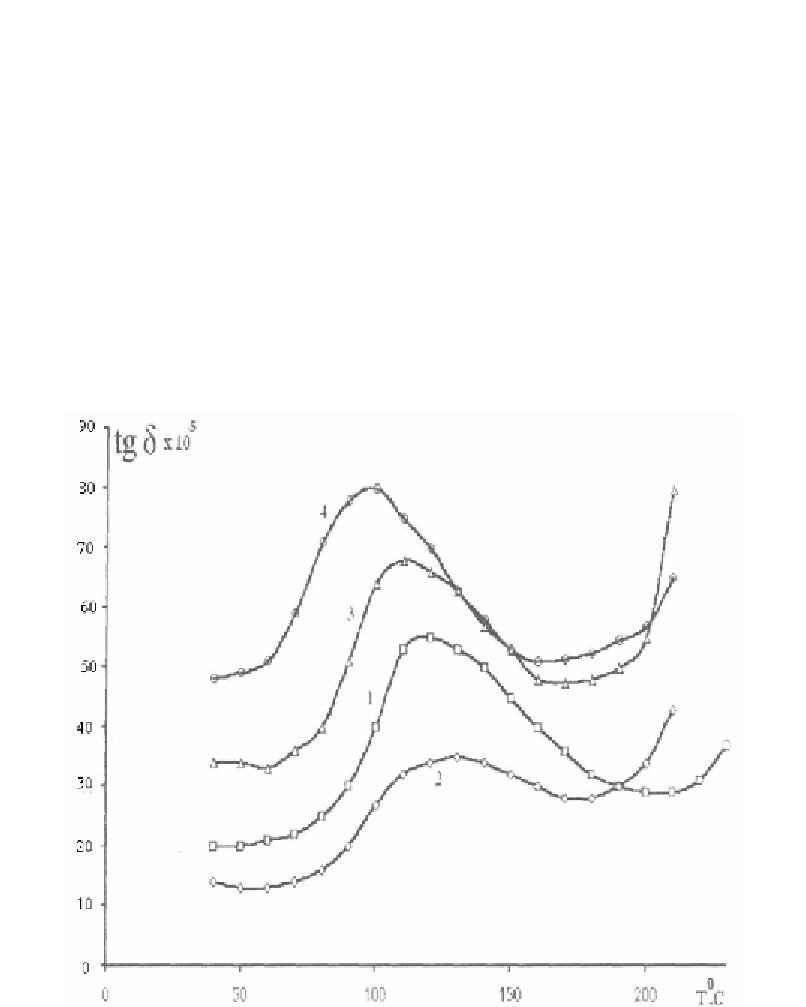Chemistry Reference
In-Depth Information
destruction are mainly localized there), then chain transfer by macroradicals defines, to a
considerable extent, that fact that processes of oxidation and destruction of oxidation and
destruction are localized mainly in these regions [312]. Hence, reduction of the number of
amorphous sectors will prevent diffusion of macroradicals in polymer volume and kinetic
chains will break. That is why destruction of polymer will be moderated. In
microphotographs, presented in Chapter 3, it is seen that introduction of hexaazocyclanes
decreases the number of amorphous regions (especially HC-2), that is why modification of
PETP - fibres by hexaazocyclanes much cause decrease PETP resistance to light action.
Obtained results give the grounds to think that search of stabilizers for PETP should be
carried out among macrocyclic aromatic compounds having structure approximating to a
plane. Investigation of frequency dependences of dielectric characteristics has shown (Figure
3.30) that maximum of dielectric losses of initial PETP is in the region 1kHz, and in modified
samples it slightly shifts into the region of higher frequencies and decreases by absolute
value.
Figure 3.30. Dependence of tangent of dielectric losses angle on temperature of initial and modified
PETP - samples: 1 - initial PETP; 2 - PETP + 0,1% of HC-2; 3 - PETP + 0,5% of HC-2; 4 - PETP +
3,0% of HC-2.
For initial PETP maximum of tangent of dielectric losses (tg δ), corresponding to dipole
segmental mobility, is observed at 115ºC. Position of this maximum on temperature axis
during introduction of 0,1% of hexaazocyclane, does not change, and by absolute value it
decreases by 1,5 times. Further growth of modifier concentration by 1-3% causes sharp

Search WWH ::

Custom Search